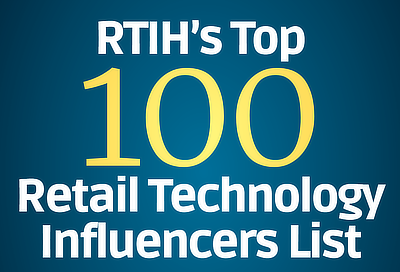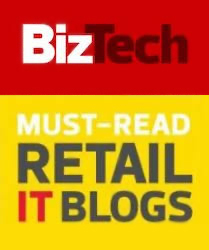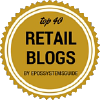Research
- July 27, 2020
PwC Global Consumer Insights Survey 2020 - The Consumer Transformed
No one knows for sure just how many of the consumer behavioral changes accelerated by COVID-19 will gain permanent traction, but our recent consumer research is pointing to an increased desire among citizens for transparency, sustainability - from PwC
- July 20, 2020
USA National Retail Security Survey 2020 -NRF
The 2020 USA National Retail Security Survey finds shrink at an all-time high, accounting for 1.62% of a retailer’s bottom line — costing the industry $61.7 billion. It cuts deeply across the industry too, with seven in 10 reporting a shrink rate that exceeds 1%. -from NRF
- July 13, 2020
Top 100 Retailers 2020 -RISnews
wRatings examined more than 350 publicly traded global retailers. For this ranking, the retail market is the sum of the revenue for all the retailers examined, valued at $3.4 trillion, an increase of more than $123 billion. -from risnews.com
- July 06, 2020
The Shift to Digital - COVID-19 Impact on Consumer Spending - Mastercard Services
The COVID-19 outbreak has accelerated the digitization of how we work, live and shop. But, how will today’s habits shape how people shop in the long run? More money was spent online in the USA in April and May than the last 12 Cyber Mondays combined; in the month of May, USA e-commerce spending grew by 93% YOY. -from Mastercard Services
- June 29, 2020
Nine By Nine: 81 Brands Changing Our World -Future Commerce
Of the 287 brands we rated from our wealth of contributions in our Future Commerce Expert Network, we distilled it down to 81. A brand is a promise. The future is, after all, what we make of it. -from Future Commerce
- June 22, 2020
McKinsey COVID-19: Implications for business
McKinsey latest perspectives on the coronavirus outbreak, the twin threats to lives and livelihoods, and how organizations can prepare for the next normal.- June 15, 2020
World Bank Global Economic Prospects, June 2020
The COVID-19 pandemic has, with alarming speed, delivered a global economic shock of enormous magnitude, leading to steep recessions in many countries. The baseline forecast envisions a 5.2 percent contraction in global GDP in 2020—the deepest global recession in eight decades, despite unprecedented policy support. Moreover, the pandemic is likely to exert lasting damage to fundamental determinants of long-term growth prospects, further eroding living standards for years to come. -from World Bank Group
- June 08, 2020
The Coming Retail Returns Tsunami
Going into 2020, the retail world was already dealing with tremendous growth in merchandise returns, with fraud and overall costs to the retailer increasing at an exponential rate due to online sales being returned to stores. In 2015 the total value of merchandise returns was estimated at $643 billion globally. By the end of 2019 this figure had increased to over $1 trillion worldwide. -from iHL
- June 01, 2020
BrandZ Top 75 Global Retail Brands
- May 25, 2020
The Race Into The Golden Age of Frictionless Retail -IHLGroup
The spread of the COVID-19 will only serve to speed the development and roll-out of various pieces of frictionless retail, including contact-less pickup and delivery. The bottom line is there is great future around the concept of frictionless retail. But it will be a crawl and walk before you run experience for any retailer who wishes to move forward. -from ihlservices.com
- May 17, 2020
The Smart Audio Report
The Spring 2020 Smart Audio Report confirms 77% of U.S. adults have had a change in their typical routine due to the outbreak of COVID-19, and voice-assistant usage has expanded during these disruptions. New research shows how smart speakers and voice assistants are increasingly becoming a part of their everyday lives.
- May 11, 2020
32nd Annual Retail Theft Survey -Jack L. Hayes International
Over 348,000 shoplifters and dishonest employees were apprehended in 2019 by just 21 large USA retailers who recovered over $136 million from these thieves, according to the 32nd Annual Retail Theft Survey conducted by Jack L. Hayes International. -from hayesinternational.com
- May 04, 2020
JLL Webinar Looks to the Future of Consumer Behavior in a Post-COVID-19 World -design:retail
After COVID-19, both households and retailer have both been financially hit, and even though there has been a push for ecommerce through this pandemic, the online experiences are mediocre. “But the good news is that 2021 is expected to be much, much stronger, with almost unheard of growth rates in an optimistic scenario around the world." Like the seven significant COVID-19 ramifications in the retail landscape. -From designretailonline.com
- April 27, 2020
Deloitte Technology, Media, and Telecommunications Predictions 2020 - How has COVID-19 Changed Expectations?
Global GDP will be weak in Q1, even weaker in Q2, and start to recover by Q4; GDP will be down 8.3% for the year as a whole. Smartphone sales were down 40% in February;2 we assume sales could be down 7% to 10% for 2020 as a whole. Ad spending will be down 5% to 10% for the year. -from Deloitte
- April 20, 2020
McKinsey COVID-19: Briefing note, April 13, 2020
Page 14 of 35
















